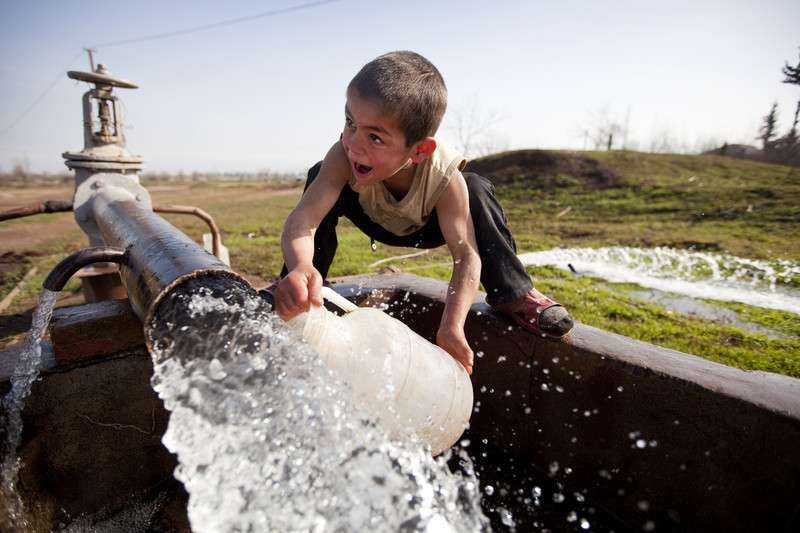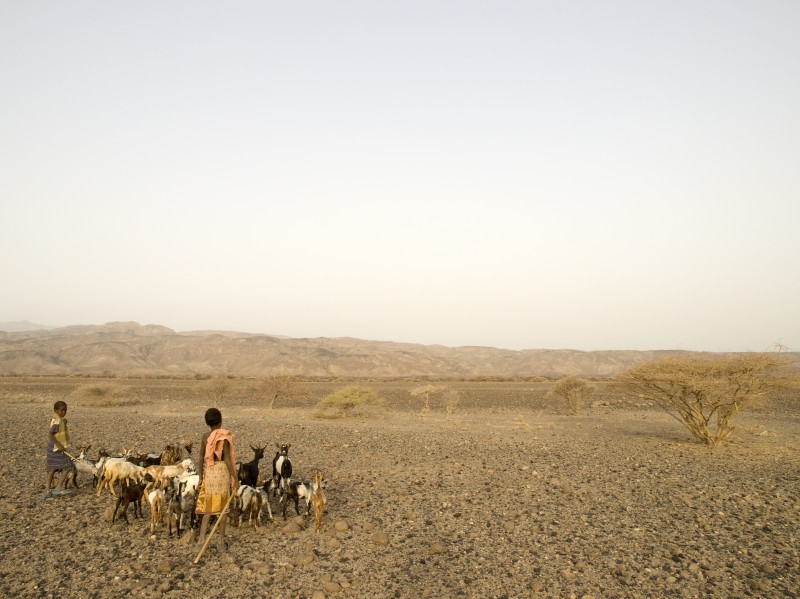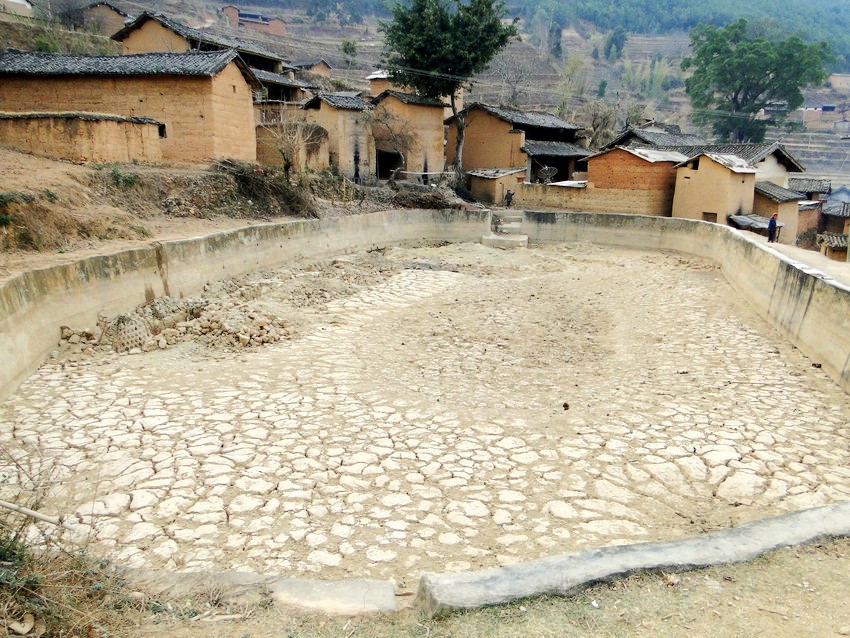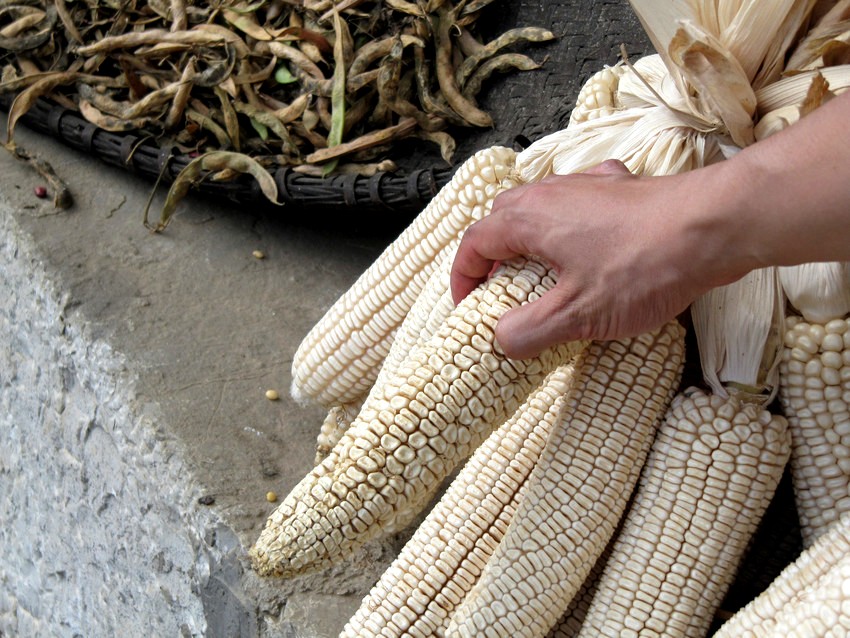发展项目, 人道救援2014年4月18日
Water: Remembering the precious resource as Southeast Asia rings in the new year
李宝琪
李宝琪于2013年加入乐施会,现为人道救援及灾害风险管理高级干事,她在工作中接触到许多紧急救援的情况,给她留下最深刻印象的是人民在应对灾害时表现的力量。
By Kate Lee – Humanitarian and Disaster Risk Management Programme Officer

A boy reaches for water in Dargalar, Azerbaijan, in this photo from 2011. The village of 400 people did not have potable water for two years before Oxfam reconstructed an artesian well there. (Oxfam/David Levene)
This past week, people across several countries in Asia got soaked from head to toe in one of the most joyful festivals on their calendars: New Year’s.
In Laos, Thailand, Myanmar and the Xishuangbanna Dai Autonomous Prefecture in Mainland China, revelers splashed each other with water in celebration. Water also played a major role as people doused Buddha statues and their elders with it. There is no better display of the vitality of water, and its importance in people’s lives.
Here in Hong Kong, having clean and sufficient tap water at home is a must to almost everyone. However, we should not take it for granted. About 8 billion people lack access to clean drinking water, and 25 billion people lack access to basic sanitation facilities around the world.
Climate change brings unpredictable, extreme weather as well as human-induced and water-related natural disasters such as droughts, floods and cyclones. In the past 20 years, disasters caused by extreme weather events have increased fourfold. Not only has this threatened the lives of billions, aggravated poverty, and rendered efforts to reduce it futile, it has also made water resources scarcer.
Ethiopia has been facing frequent droughts of varying degrees of severity over the past 10 years, for example. In 2011, the most serious drought in 60 years took place in East Africa, leading to crops failures, the death of livestock, and sharp increases in local cereal prices. As a result, more than 1 million children came under the risk of malnutrition and about 18.4 million people had to face the risk of hunger.

In this image from 2008, a drought leaves pasture around Okarey-Af in Ehtiopia barren, leaving the people there with no income and dependent on food aid from NGOs. (Oxfam/Nick Danziger)
In order to reduce suffering and the negative effects of drought on the lives and livelihoods of pastoral communities, we’ve been working on programmes that provide emergency relief and simultaneously build community resilience to droughts. We arrange for emergency water trucks and tankers, animal feed, and health care supplies to be delivered. We also work with communities on long-term strategies to increase their livestock and crop productivity through improved rangeland management. For example, they can plant drought-resistant forage. With our support, they are also able to build small-scale irrigation facilities and work with their local government authorities on disaster-risk reduction strategies.

A drought affects a village in Yunnan. Extreme weather events hit poor communities hard. (Oxfam/Zhou Chun)

Droughts affect corn harvests in Changshun County in Guizhou in 2011. Inclement weather brought by climate change has deeply affected people’s livelihoods. (Oxfam/Chris Wong)
Our studies show that every year more than 200 million people suffer from climate-related disasters and more than 90 per cent of the victims and casualties are in impoverished countries and communities.
However, does this mean that Hong Kong will never be badly affected by climate change? The Hong Kong Observatory recently conducted a study to analyse weather data from the past 50 years. Tide records from Victoria Harbour show the mean sea level rose 29 millimetres per decade from 1954 to 2013. This rise, which results from climate change, has led to an increase in sea flooding from storm surges when tropical cyclones occur.
In fact, Hong Kong, with its location on the South China Sea, experiences six tropical cyclones every year on average. If the sea level rises, the chances and the scale of flooding due to storm surges brought about by typhoons would very likely increase. A flood caused serious damage at Tai O when Typhoon Hagupit came in 2008. If in 2013 Typhoon Usagi had moved 100 kilometressouthward of its location when it was closest Hong Kong, and if this had occurred during high tide, Quarry Bay would have experienced a storm surge of about 4 metres.
On the one hand, increasing temperatures have transferred a lot of water which was previously locked in glaciers and as snow on mountains to the sea. This has resulted in a rise in the sea levels. Water resources and food security have in turn been affected. According to the International Water Management Institute, meltwater contributions to Asia’s rivers have been decreasing over the past 50 years, and will continue to do so.
The theme of this year’s World Water Day on 22 March was water and energy. Water and energy are closely interlinked and interdependent. Water is key to energy generation and transmission, particularly for hydroelectric, nuclear, and thermal energy.
As everyone dries off from the water-splashing festivities in Southeast Asia, let it be an opportunity for Hong Kong people to reflect on the importance of water as a precious natural resource.
 Kate Lee joined Oxfam Hong Kong in 2013 as humanitarian and disaster risk management programme officer. Her work has put her in touch with a lot of disasters and emergencies. What has impressed her most is the power of people, and the fact that those in disasters are able to say: “We are homeless, but not helpless.” Kate believes that what such people need most is to recover their livelihoods. The photo, taken in Gansu, Mainland China, in June 2012, shows a rainbow after rain. Gansu has always suffered from droughts, however people still try to live with the tough environment, Kate says.
Kate Lee joined Oxfam Hong Kong in 2013 as humanitarian and disaster risk management programme officer. Her work has put her in touch with a lot of disasters and emergencies. What has impressed her most is the power of people, and the fact that those in disasters are able to say: “We are homeless, but not helpless.” Kate believes that what such people need most is to recover their livelihoods. The photo, taken in Gansu, Mainland China, in June 2012, shows a rainbow after rain. Gansu has always suffered from droughts, however people still try to live with the tough environment, Kate says.
